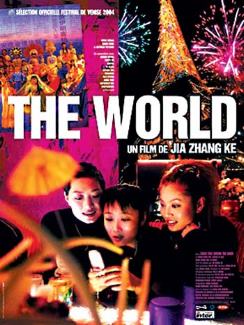by Eric Dalle
Jump Cut

The construction of the Three Gorges Dam on the Yangtze River, which reached various levels of completion during the first decade of the 21st century, has become an intensely controversial issue among environmentalists, the government of the People’s Republic of China, and the millions of residents who have been displaced due to flooding caused by the dam’s construction. Set upon the backdrop of Three Gorges Dam, Jia Zhangke’s 2006 film Still Life follows the interpersonal intricacies of two couples from opposite sides of the economic divide of an industrializing China. The characters’ lives play out in relation to the construction and demolition associated with the damming project. Furthermore, the film explores how the impending flood highlights the complexities of the socio-economic while contemplating the human limits of comprehending massive changes in topography.
One prominent long take occurs after Han Sanming and Missy, two of the main characters from an initial narrative thread, reunite after sixteen years of being apart. The estranged pair dawdles in a gutted building. The man and woman are placed in the right–hand side of the frame of this long shot: she standing to his left, and he squatting. To the left of this pair, a wide hole made by the demolition process exposes the backdrop of the city. Missy gives Sanming a piece of candy, and she squats facing him—he continuously smoking a cigarette. The only diagetic sounds within this minute-long shot are distant car horns and even more distant sounds of mallets striking concrete buildings. Suddenly within the panorama of the cityscape, of which the viewer has access through the gap in the wall in the background, one of the larger buildings falls—hiccupping ash and rubble along its rumbling descent. The two characters stand and turn in the direction of the massive movement and accompanying noise that invades the city view. Sanming gently places his hands on Missy’s arms from behind.
When taken in context of the overall plot of the film, this particular shot narrates an implosion of disparate forces in terms of labor, migration, human trafficking, and environmental destruction that is exposed by the vanishing topography as a result of the Three Gorges Dam. Missy’s original home has now been submerged by the rising waters. It is also revealed in the film that she is a victim of human trafficking because Sanming had originally purchased her from that area. The nostalgic Sanming, though, hopes to return to Shanxi with his estranged wife and continue working in the dangerous coal mines to pay off the debt to the man that purchased Missy from her brother. The predicament of the two characters projects an endemic situation of the economics of the locale—they are physically relocated by the commerce environmentally affecting the area of Fengjie and the economics of an industrializing China.
Still Life encapsulates the environmental side of Jia Zhangke’s larger filmic project. Since the beginning of his career, Jia’s works have sought to expose the evolution of China in relation to rapid economic development, the aesthetic implications of globalization, and the human toll of environmental degradation. Jia’s preoccupation with change allows for the vestiges of human resolve to survive among the shifting socio-economics of contemporary society, all wrought by larger interrelated forces, that are state-sponsored, global, and imposed through economic structures. Ultimately, Jia Zhangke’s filmic project sets to critique the very notion of representing the changes in topography by pushing the limits of narrative and documentary film in turn exposing the conceptual holes in comprehending vast ecological change.
This article offers a reading of Jia Zhangke’s films in relation to how his career is invested in narrating changing topography. Jia, as director, embodies many of the influences he describes. His hometown becomes his first major thematic subject, and he is able to utilize the advancement and availability of digital technologies to craft and promote his work. An introduction to Jia’s early films sets the foundation for a reading of his 2006 work Still Life which will be approached from three perspectives: the heterogeneity of environmental impact understood through the migrant experience, the way in which Jia understands nostalgia as a crisis in signification, and the manner in which the film de-centers the notion of home and homelessness. Finally, the conclusion will demonstrate how Jia’s Still Life, when read against his companion documentary Dong, implodes the boundaries of documentary and narrative. Jia Zhangke’s work exposes the limits of logic in comprehending changes in landscape and engages in the act of narrating topography.
To Read the Rest of the Essay

No comments:
Post a Comment